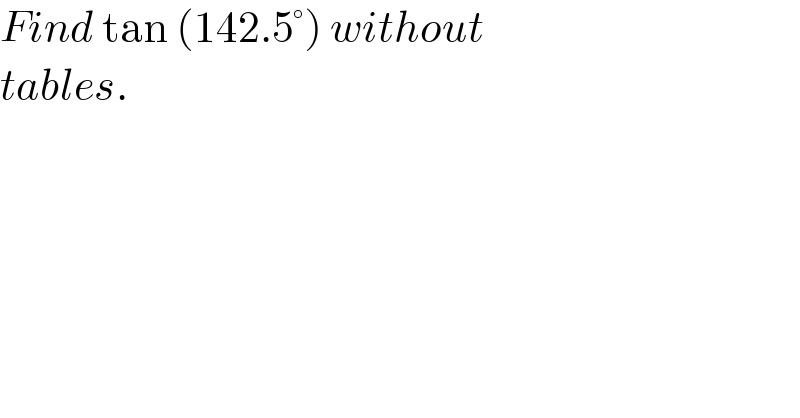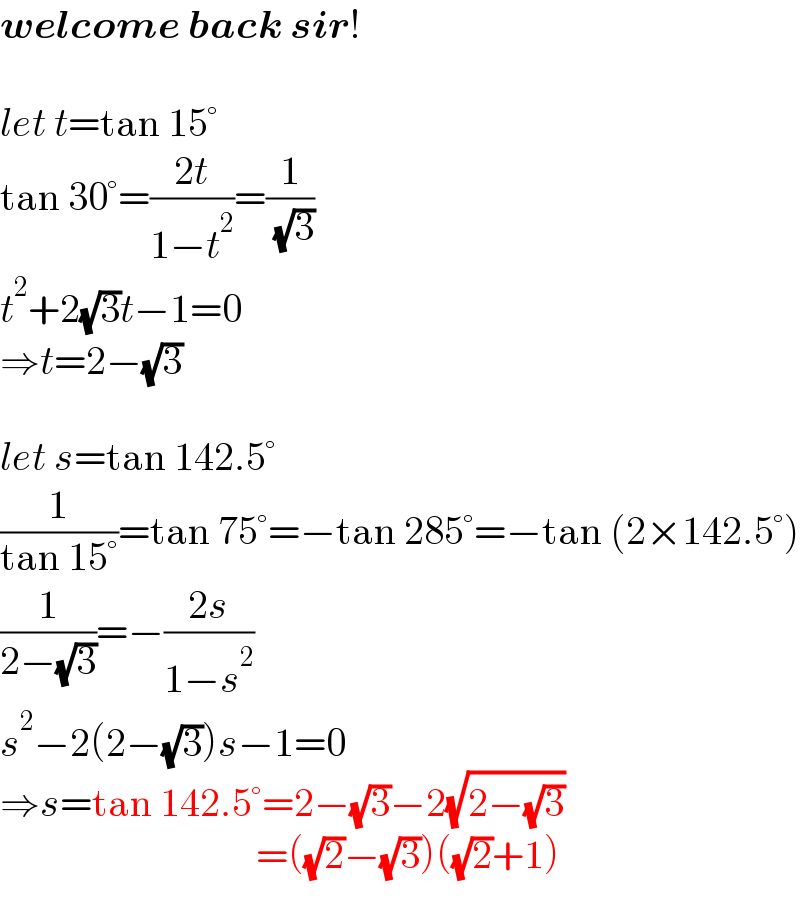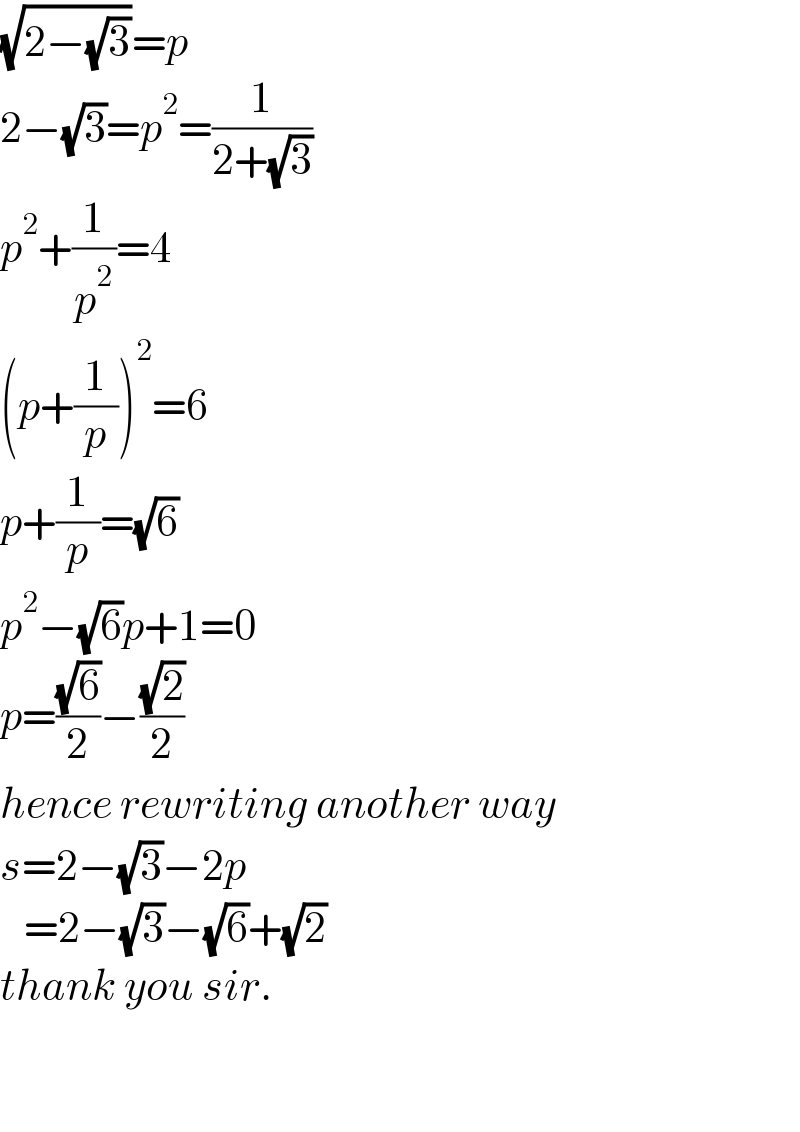Question Number 173447 by ajfour last updated on 11/Jul/22

Commented by mr W last updated on 12/Jul/22

Commented by ajfour last updated on 11/Jul/22

Commented by Tawa11 last updated on 11/Jul/22

Commented by Tawa11 last updated on 13/Jul/22

